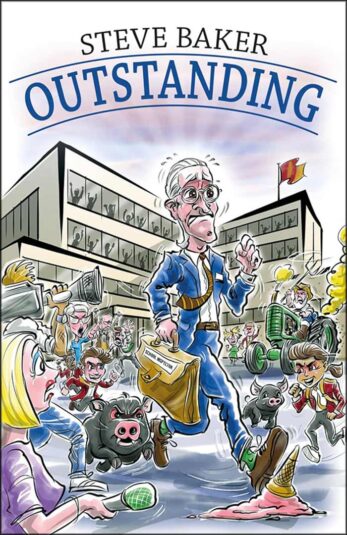Many books these days promise to turn the reader into “outstanding” practitioners (whatever one of those looks like) overnight. The truth, however, is significantly different. All these books can offer is a modicum of insight in to the practice of the author; what strategies have worked for them and their immediate colleagues in their own setting.
McCarthy tries to go the extra mile in this book. Through her strategy of “Six Steps to Outstanding”, she tries to map a journey that anyone can follow. Most of her observation is commonsense but she writes it in a way that makes the reader think and, perhaps more importantly, question what they are doing in their classroom.
Her style, whilst light, is insightful. One useful exercise she suggests is “fluffy widgeting” a worksheet – if you make a worksheet that is still answerable if you change all the key words into meaningless one then there is a suggestion that you are not teaching your students very much beyond how to retrieve basic information. She then suggests strategies to promote deeper learning. All her advice is linked back to theory and other best practice; there is little new information in the 154 pages (ideally sized to slip into the school bag as a quick reference) but the novelty is that it is in an easy to access format.
“Every teacher will be able to take at least one hint to add to their own toolkit”
Each chapter starts with a challenge – chapter 1, Surprise, starts with a question asking the difference between a teacher and a train driver. From the off this stimulates the mind and sets the scene. This casual style helps to put you back into the minds of your learners rather than the elevated pedestal of the teacher. Gentle reminders of this throughout the book help to keep you on the right track.
McCarthy tries to break teaching down into six simple strands – whether the job is as simplistic as this is for another discussion – Surprise, Purpose, Investigate, Differentiate, Evaluate and Record and Reflect. Hence the SPIDER strategy. Does this work? Can teaching be distilled into this seemingly simplistic strategy? I would suggest not, but if you’re a trainee teacher looking for a basic guide you would do no wrong by trying this model on for size. There are lots of real-life exemplars and traps to avoid falling in to (the introduction talks about having that “Ofsted” lesson, but questions the value of it if it is not your “normal” teaching style).
Overall this is a useful book that will stimulate the novice teacher and point them into further reading. Every teacher will be able to take at least one hint to add to their own toolkit; even if it is just giving approval to something they already do in their practice. Would I use the strategy? Possibly not in its whole form, but I would certainly dip into the ideas to enhance my classroom practice.
Ultimately this is all this style of book can do. We don’t wish to become a profession of mindless automatons (although the national literacy and numeracy strategies tried to do this!), but this is worth keeping on your bookshelf for those days when you are looking for some direction.












Your thoughts